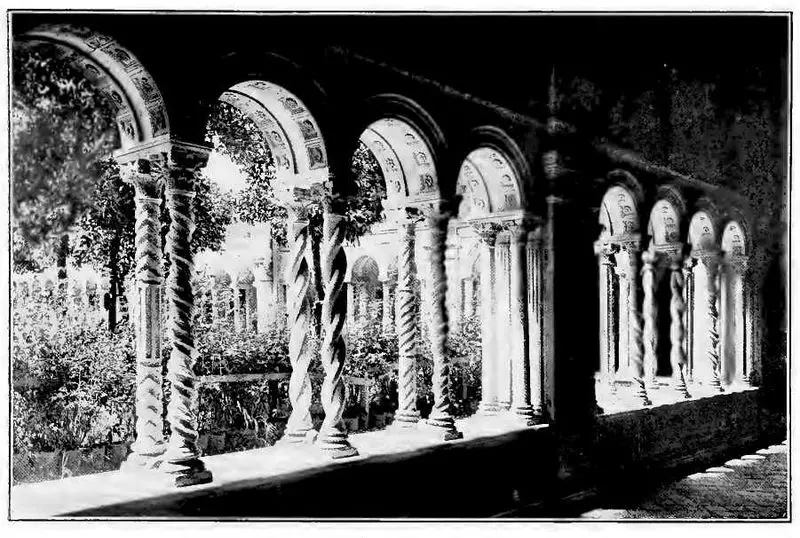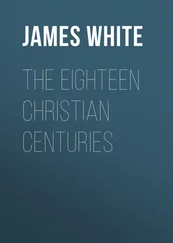James Walsh - The Thirteenth, Greatest of Centuries
Здесь есть возможность читать онлайн «James Walsh - The Thirteenth, Greatest of Centuries» — ознакомительный отрывок электронной книги совершенно бесплатно, а после прочтения отрывка купить полную версию. В некоторых случаях можно слушать аудио, скачать через торрент в формате fb2 и присутствует краткое содержание. Жанр: foreign_prose, История, foreign_edu, foreign_antique, на английском языке. Описание произведения, (предисловие) а так же отзывы посетителей доступны на портале библиотеки ЛибКат.
- Название:The Thirteenth, Greatest of Centuries
- Автор:
- Жанр:
- Год:неизвестен
- ISBN:нет данных
- Рейтинг книги:3 / 5. Голосов: 1
-
Избранное:Добавить в избранное
- Отзывы:
-
Ваша оценка:
- 60
- 1
- 2
- 3
- 4
- 5
The Thirteenth, Greatest of Centuries: краткое содержание, описание и аннотация
Предлагаем к чтению аннотацию, описание, краткое содержание или предисловие (зависит от того, что написал сам автор книги «The Thirteenth, Greatest of Centuries»). Если вы не нашли необходимую информацию о книге — напишите в комментариях, мы постараемся отыскать её.
The Thirteenth, Greatest of Centuries — читать онлайн ознакомительный отрывок
Ниже представлен текст книги, разбитый по страницам. Система сохранения места последней прочитанной страницы, позволяет с удобством читать онлайн бесплатно книгу «The Thirteenth, Greatest of Centuries», без необходимости каждый раз заново искать на чём Вы остановились. Поставьте закладку, и сможете в любой момент перейти на страницу, на которой закончили чтение.
Интервал:
Закладка:
Though it is somewhat out of place here we cannot refrain from pointing out the educational value of this stained glass work.
Some of the stories on these windows gave details of many passages from the Bible, that must have impressed them upon the people much more than any sermon or reading of the text could possibly have accomplished. They were literally sermons in glass that he who walked by had to read whether he would or not. When we remember that the common people in the Middle Ages had no papers to distract them, and no books to turn to for information, such illustrations as were provided by the stained glass windows, by the painting and the statuary decorations of the Cathedrals, must have been studied with fondest devotion even apart from religious sentiment and out of mere inquisitiveness. The famous "prodigal" window at Chartres is a good example of this. Every detail of the story is here pictorially displayed in colors, from the time when the young man demands his patrimony through all the various temptations he met with in being helped to spend it, there being a naive richness of detail in the matter of the temptations that is quite medieval, from the boon companions who first led him astray to the depths of degradation which he finally reached before he returned to his father,—even the picture of the fatted calf is not lacking.
On others of these windows there are the stories of the Patron Saints of certain crafts. The life of St. Crispin the shoemaker is given in rather full detail. The same is true of St. Romain the hunter who was the patron of the furriers. The most ordinary experiences of life are pictured and the methods by which these were turned to account in making the craftsman a saint, must have been in many ways an ideally uplifting example for fellow craftsmen whenever they viewed the window. This sort of teaching could not be without its effect upon the poor. It taught them that there was something else in life besides money getting and that happiness and contentment might be theirs in a chosen occupation and the reward of Heaven at the end of it all, for at the top of these windows the hand of the Almighty is introduced reaching down from Heaven to reward his faithful servants. It is just by such presentation of ideals even to the poor, that the Thirteenth Century differs from the modern time in which even the teaching in the schools seems only to emphasize the fact that men must get money, honestly if they can, but must get money, if they would have what is called success in life.
Another very interesting feature of these windows is the fact that they were usually the gifts of the various Guilds and so represented much more of interest, for the members. It is true that in France, particularly, the monarchs frequently presented stained glass windows and in St. Louis time this was so common that scarcely a French Cathedral was without one or more testimonials of this kind to his generosity; but most of the windows were given by various societies among the people themselves. How much the construction of such a window when it was well done, would make for the education in taste of those who contributed to the expense of its erection, can scarcely be over-estimated. There was besides a friendly rivalry in this matter in the Thirteenth Century, which served to bring out the talents of local artists and by the inevitably suggested comparisons eventually served to educate the taste of the people.
It must not be thought, however, that it was only in stained glass and painting and sculpture—the major arts—that these workmen attained their triumphs. Practically every detail of Cathedral construction is a monument to the artistic genius of the century, to the wonderful inspiration afforded the workmen and to the education provided by the Guilds which really maintained, as we shall see, a kind of Technical School with the approbation and the fostering care of the ecclesiastics connected with the Cathedrals. An excellent example of a very different class of work may be noted in the hinges of the Cloister door of the Cathedral at York. Personally I have seen three art designers sketching these at the same time only one of whom was an Englishman, another coming from the continent and the third from America. The hinge still swings the heavy oak door of the Thirteenth Century. The arborization of the metal as it spreads out from the main shaft of the hinge is beautifully decorative in effect.

CLOISTER OF ST. PAUL'S (WITHOUT THE WALLS, ROME)
A little study of the hinge seems to show that these branching portions were so arranged as to make the mechanical moment of the swinging door less of a dead weight than it would have been if the hinge were a solid bar of iron. Besides the spreading of the branches over a wide surface serves to hold the woodwork of the door thoroughly in place. While the hinge was beautiful, then it was eminently useful from a good many standpoints, and trivial though it might be considered to be, it was in reality a type of all the work accomplished in connection with these Thirteenth Century Cathedrals. According to the old Latin proverb " omne tulit punctum qui miscuit utile dulci ," he scores every point who mingles the useful with the beautiful, and certainly the Thirteenth Century workman succeeded in accomplishing the desideratum to an eminent degree. This mingling of the useful and the beautiful is of itself a supreme difference between the Thirteenth Century generations and our own. Mr. Yeats, the well known Irish poet, in bidding farewell to America some years ago said to a party of friends, that no country could consider itself to be making real progress in culture until the very utensils in the kitchen were beautiful as well as useful. Anything that is merely useful is hideous, and anyone who can handle such things with impunity has not true culture. In the Thirteenth Century they never by any chance made anything that was merely useful, especially not if it was to be associated with their beloved Cathedral.
Конец ознакомительного фрагмента.
Текст предоставлен ООО «ЛитРес».
Прочитайте эту книгу целиком, купив полную легальную версию на ЛитРес.
Безопасно оплатить книгу можно банковской картой Visa, MasterCard, Maestro, со счета мобильного телефона, с платежного терминала, в салоне МТС или Связной, через PayPal, WebMoney, Яндекс.Деньги, QIWI Кошелек, бонусными картами или другим удобным Вам способом.
1
Certain other terms that occur in these letters of greeting to university officials have a more than passing interest. The rector of the university, for instance, was always formally addressed as Amplitudo Vestra, that is, Your Ampleness. Considering the fact that not a few of the rectors of the old time universities, all of whom were necessarily ecclesiastics, must have had the ampleness of girth so characteristic of their order under certain circumstances, there is an appropriateness about this formal designation which perhaps appeals more to the risibilities of the modern mind than to those of medieval time.
2
Most of the details of what was accomplished for education by Pope Innocent III, and all the references needed to supply further information, can be found in the Hestoire Litteratire de la France , recent volumes of which were issued by the French Institute, though the magnificent work itself was begun by Benedictines of St. Maur, who completed some fifteen volumes. The sixteenth volume, most of which is written by Dauñou, is especially valuable for this period. Du Boulay, in his History of the University of Paris, will furnish additional information with regard to Pope Innocent's relations to education throughout Europe, especially, of course, in what regards the University of Paris.
Читать дальшеИнтервал:
Закладка:
Похожие книги на «The Thirteenth, Greatest of Centuries»
Представляем Вашему вниманию похожие книги на «The Thirteenth, Greatest of Centuries» списком для выбора. Мы отобрали схожую по названию и смыслу литературу в надежде предоставить читателям больше вариантов отыскать новые, интересные, ещё непрочитанные произведения.
Обсуждение, отзывы о книге «The Thirteenth, Greatest of Centuries» и просто собственные мнения читателей. Оставьте ваши комментарии, напишите, что Вы думаете о произведении, его смысле или главных героях. Укажите что конкретно понравилось, а что нет, и почему Вы так считаете.












